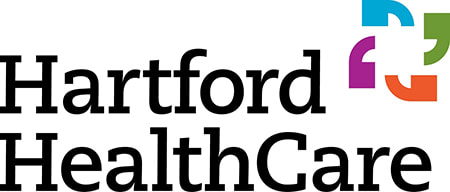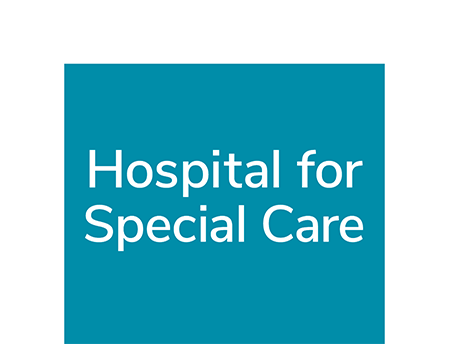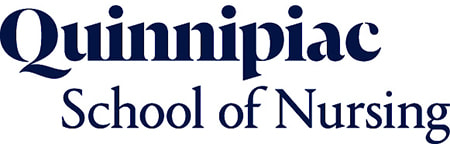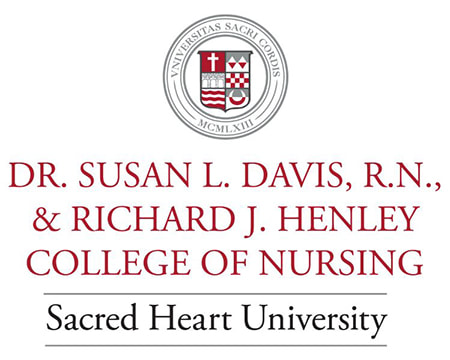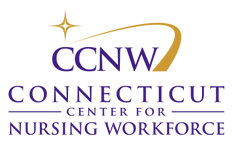|
Critical Areas of Concern Shared by Senior level Nursing Students Related to the Transition from Student Nurse to Practicing Nurse
On November 7, 2023, The Connecticut Center for Nursing Workforce, Inc. (CCNW) held its 43rd Annual RN Student Day that attracted over 830 senior level nursing students from Connecticut Schools and Programs of Nursing. During a morning session, Marcia B. Proto, M.ED, CAS, Executive Director of the CCNW, asked each of the (85) tables to select a Table Captain for an activity. The Table Captain was to engage their peers in open dialogue to identify and capture their thoughts and concerns related to the transition from student nurse to practicing nurse. The student feedback which represents 28% of the current senior level nursing students was a true “eye-opener”. They identified five key areas that students want, and need addressed by both academe and practice related to pre-and post-hire concerns which would help foster a seamless transition to practice for the graduating nursing student and promote retention of the new nurse within the first year. As a result, CCNW will be developing and delivering programming to address these five (5) keys areas to support the leadership of Connecticut’s nursing schools and practice settings via interactive webinars that will be delivered via our professional development “Lunch and Learn Webinar Series” beginning in early 2024. CCNW categorized the student responses and feedback into the following five key areas:
0 Comments
Limited Capacity of Connecticut’s RN Schools and Programs of Nursing: Our Schools and Programs of Nursing have a very hire rate of student retention at approximately 95% and graduate approximately 2,100 students per year, yet it is not clear how many of these graduates become licensed in Connecticut and remain here to work.
Reports
Online Resources
A new analysis by the Connecticut Data Collaborative and The Connecticut Center for Nursing Workforce, Inc. reveals that of the 86,483 nurses that have a current license in Connecticut, only about half that number - 44,086 - are actively practicing in Connecticut. Both COVID restrictions and a decrease in available clinical placements needed by RN and LPN students to graduate encumbers the expansion of nursing schools in Connecticut and nationwide. Of that number, 36,953 are registered nurses (RN) and 7,130 are licensed practical nurses (LPN). Of the 42,397 who are licensed but not actively practicing in Connecticut, approximately 20% practice in another state, with the highest number working in New York (1,297), Massachusetts (918), and Florida (591). The data indicates that 7,917 nurses are age 60 or older, while only 4,390 are under age 30. The data also shows that RNs and LPNs in Connecticut have an overall median age of 47. RNs are most likely to be in the 50-59 age band, while LPNs are most likely to be in the 30-39 age band. “An alarm bell should be ringing. Connecticut does not have nearly the number of younger nurses needed to replace those who will be retiring within this decade. We must monitor and act on these data and current trends, which have been exacerbated by the pandemic,” said Marcia Proto, M.Ed, CAS, Executive Director of the Connecticut Center for Nursing Workforce (CCNW) and the Connecticut League for Nursing (CLN). “We really haven’t moved the needle on what needs to be done.” In the state workforce, the majority of nurses identified as White (75%), followed by Black (12%) and Hispanic or Latino (6%).* Overall, there were 40,401 responses (33,920 RNs and 6,481 LPNs) to the race and ethnicity data survey question. “This is what informed, data-based decision-making is all about. The data revealed by this project is clearly important as it impacts public health, education and jobs, and the partnership forged between CCNW and CTData reaffirms both organizations’ commitments to make data easily accessible and encourages stakeholders to use the data for action and strengthen their strategies,” said Michelle Riordan-Nold, Executive Director of the Connecticut Data Collaborative. The Connecticut Data Collaborative (CTData) is a public-private partnership that advocates for the public availability of open and accessible data, serving nonprofits, advocates, policymakers, community groups, and funders in using data to drive policy and improve programs and services, budgeting and decision making at the state, regional and local levels. Of the RNs actively practicing in Connecticut, 55% have earned a baccalaureate degree, 20% have earned a master’s degree and 2% have earned a doctoral degree. Among LPNs, who are not required to obtain an associate’s or baccalaureate degree, 18% have earned an associate’s, 7% a baccalaureate and 1% a master’s degree. LPNs are required to graduate from a state-approved certificate program and pass a national licensing exam to receive their LPN license. Only about 1 in 4 LPNs have pursued higher education after receiving their license, which points to one of the workforce challenges facing Connecticut. Among students pursing nursing, 66% of those in RN programs are White and 23% are Black or Hispanic. The numbers are substantially different in LPN programs, where 51% of students are Black, 20% are Hispanic and 17% are White. Many individuals who have earned an LPN, and who might otherwise be interested in advancing to RN, are unable to do so because of their own limited financial resources or the limited availability of slots in RN programs in Connecticut. That prevents the state from achieving greater diversity among RNs and limits the total number of RNs working in Connecticut, in a variety of healthcare settings, amidst increasing need. Among the many challenges facing Connecticut in its efforts to bring new nurses into the field is the fact that prospective nurses in Connecticut’s institutions of higher education must complete clinical hours in order to earn their academic degree. While attaining those hours has long been a challenge because of limited hours available at hospitals, the acute situation facing hospitals during the past two years has further reduced the number of hours available to students for clinical experience. That has, in turn, limited the number of students that can be accepted into nursing programs, even as the demand for graduates continues to grow. “Connecticut is experiencing critical shortages in healthcare positions, like we did nearly two decades ago, with double digit vacancy rates for nurses at our hospitals,” Proto added. “With nursing the largest job category within healthcare in Connecticut, the financial cost to employers and our state to address this type of shortage is significantly impacting providers and beginning to compromise access to care for our residents. We must act now.” Although “new seat” capacity in nursing programs in Connecticut increased slightly – by nearly 100 – between 2019 and 2020, the number of qualified nursing applicants increased by more than 1,100 over that same period. Statewide, seat capacity in RN programs is 2,812 students, thus the "first-day" student enrollment represented only 24% of qualified student applicants. The data suggest that due to near capacity enrollments and limited attrition in state's RN programs, the only way that Connecticut can increase annual graduation numbers for the RN would be to expand enrollments, which will require both additional faculty and the availability of additional clinical hours. “Two years ago, we collaborated to issue a report that stressed the importance of devoting state resources to better understand the education, supply and demand dynamics for nursing professionals,” Proto pointed out, “to ensure that our State can produce the numbers and types of nurses that we will need to provide safe and quality care to our residents. If anything, that imperative is even more acute today. ” Connecticut has the 7th oldest population in the nation, which underscores the need for medical professionals, particularly nurses. Yet, as the population grows older, the number of nurses is not keeping pace. The data analysis includes an interactive map of Connecticut’s 169 municipalities, comparing the number of nurses with the percentage of residents over age 65, as a means of exploring the Connecticut’s growing gap. Nearly two-thirds of nurses (63.7%) in Connecticut work as staff nurses, followed by nurse managers (11%), and other health-related positions (10%) and advanced practice nurse (7.9%). Among LPNs, 80% are staff nurses, compared with 60.8% of RNs. Nearly 20% of RNS are either nurse managers (11.8%) or advanced practice nurses (9.2%). The most common work setting is in a hospital, where half of nurses are employed. Work settings differ greatly between RNs and LPNs, with RNs most likely to work in a hospital (57%) or ambulatory care (13%) while LPNs work predominantly in long term care (63%) and home health (17%). LPNs are also more likely to work in community health, correctional facilities, and public health settings. Similar to national statistics, over 9 in 10 nurses in Connecticut identify as female and this is consistent for both RNs and LPNs. CTData empowers an ecosystem of data users by democratizing access to public data and building data literacy skills. CTData serves residents, nonprofits, policymakers, and funders in using data to drive policy, program, and service improvements. More than 200 data sets are now accessible to the public on the CT Data website, including a wide array of subjects and policy categories. To see the latest data, visit http://nursing.ctdata.org
The data used in this Nursing Workforce Supply Report was extracted from the 2020 Connecticut Nurse Licensure System Dataset collected by the Connecticut Department of Public Health (CT DPH) via the online NurSys Annual Licensing System using the Minimum Data Set for Nursing SUPPLY created by the National FORUM. The CT DPH, CCNW and the CT Data Collaborative aggregated and analyzed these data for reporting purposes. *The nursing survey allowed RNs and LPNs to select multiple races and ethnicities. For example, an individual who identified as Black, Hispanic, and Other had the option to select all three categories. Media Contacts Michelle Riordan-Nold Executive Director Connecticut Data Collaborative 860.937.9056 [email protected] Marcia Proto, M.Ed., CAS, Executive Director The Connecticut Center for Nursing Workforce, Inc. 203.494.1121 [email protected] Hospital for Special Care (HFSC) welcomes students pursuing initial degrees in nursing to apply for a 2021 Nursing Scholarship. Scholarships available are made possible through established charitable funds. Six scholarships will be awarded to students enrolling or enrolled in an accredited college/university as full-time or part-time undergraduate students and meeting the eligibility criteria below.
Application Deadline is May 10, 2021 SCHOLARSHIP AMOUNTS:
ELIGIBILITY REQUIREMENTS: This scholarship is open to:
ADDITIONAL ELIGIBILITY REQUIREMENTS: § Must maintain a minimum of a 2.75 grade point average on a 4.0 scale For your convenience, here is a direct link to the application online: HFSC 2021 Nursing Scholarship Application. Questions? Laura Gervais Donor Database Manager Hospital for Special Care Foundation [email protected] Direct: 860-832-6257 |
Categories
All
Archives
June 2024
|
||||||||
OUR MISSIONTo foster collaborations to ensure a highly educated, diverse, and sustainable nursing workforce to support the healthcare needs of Connecticut residents.
Terms of use Policy | Privacy Policy
Event Policy: No refunds will be given two (2) weeks prior to any event |
LoginContact UsFor more information or questions, please complete the online form to contact Marcia B Proto, M.Ed, CAS via email.
|
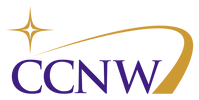




 RSS Feed
RSS Feed










